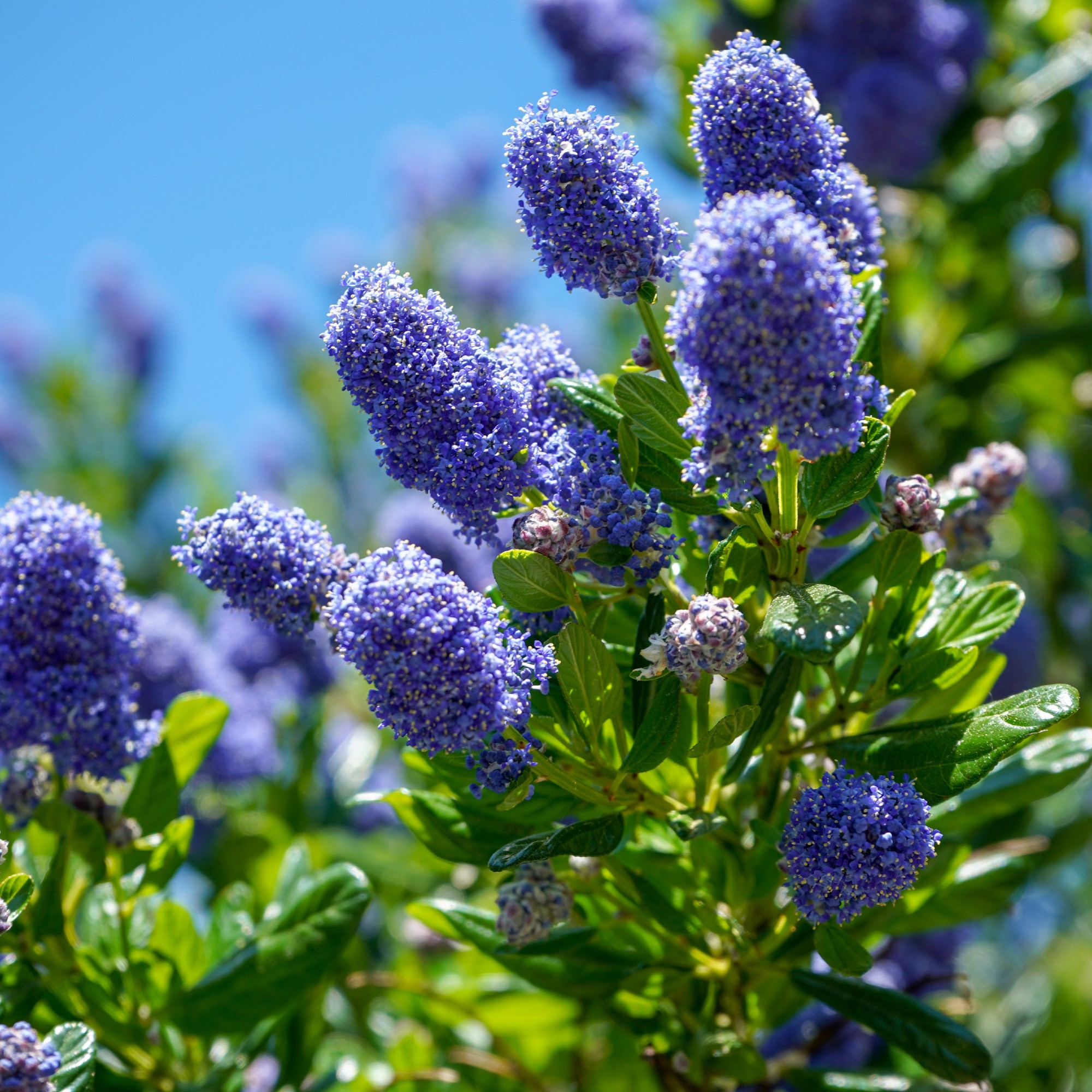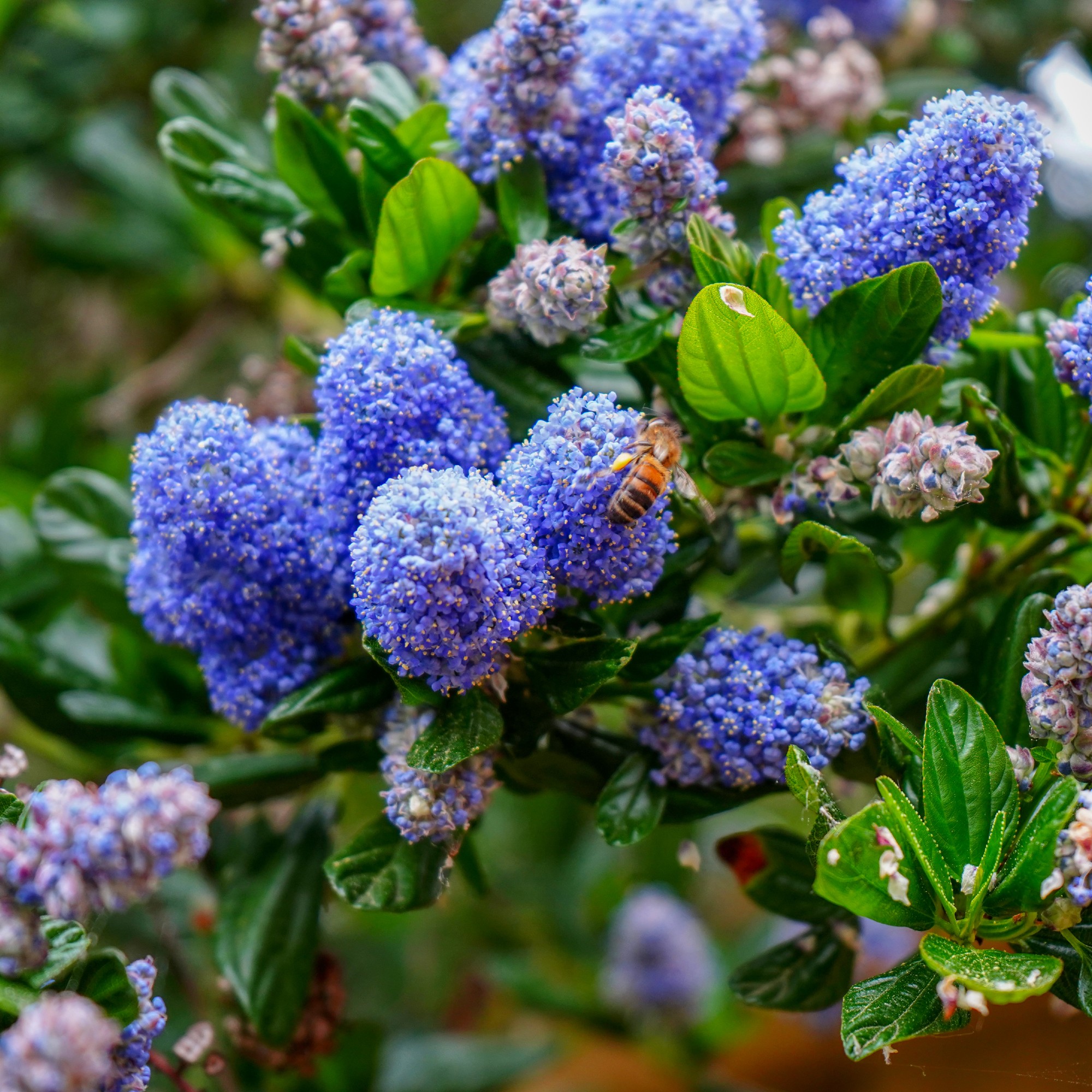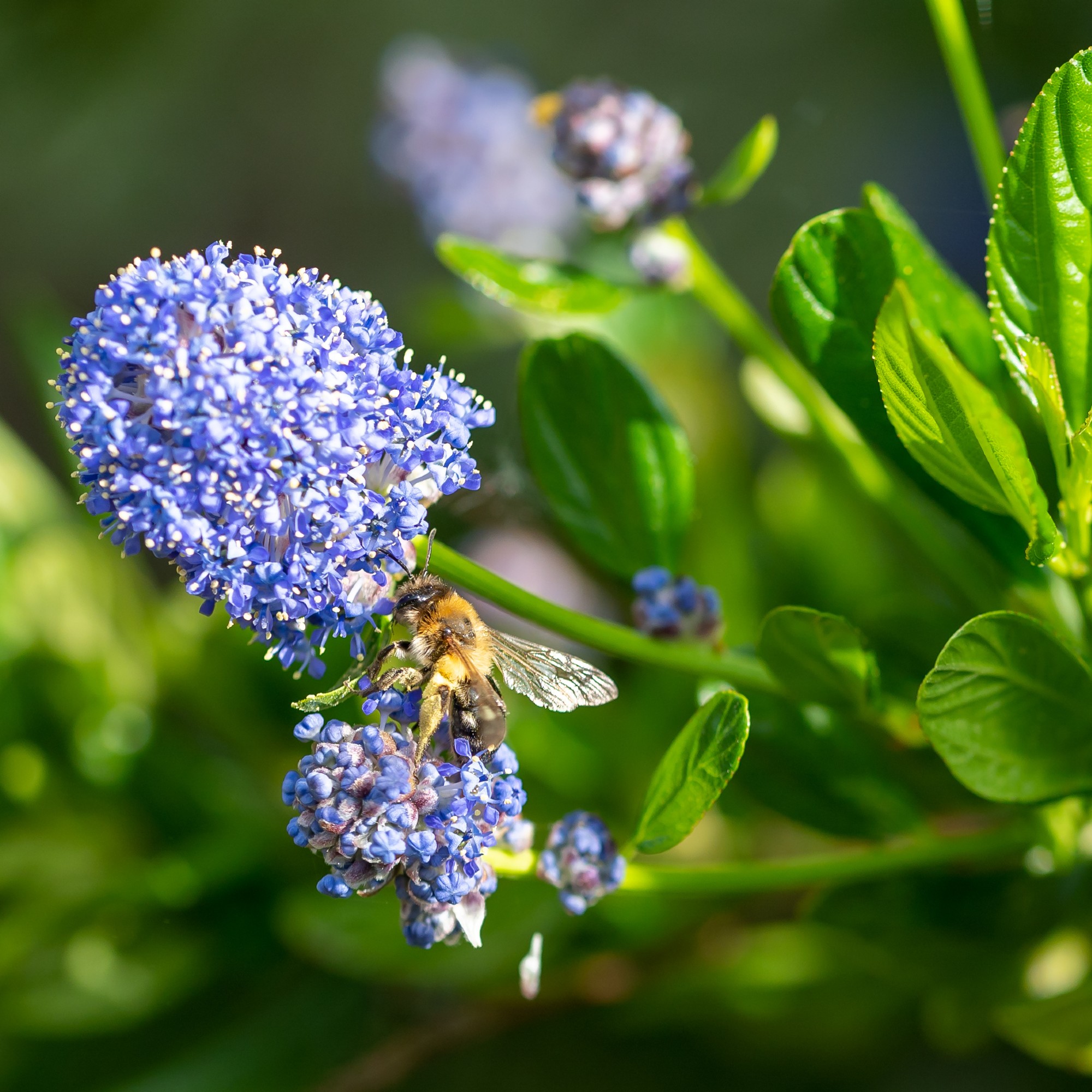
Ceanothus, more commonly known as California lilac, is a beautiful flowering shrub found in thousands of gardens across the UK. If you want to keep the plant in check and ensure long-lasting displays, you'll need to know when to prune Ceanothus.
Learning when to cut back shrubs at the right time will ensure the plant isn't damaged or placed under any unnecessary stress. The same applies to Ceanothus – and pruning at the right time will encourage healthy new growth.
'Ceanothus is a versatile shrub that provides plenty of flowers and often attracts bees and other pollinators to the garden,' says Andy Tudbury, head gardener at Belvoir Castle. That's why California lilacs feature in our favourite bee garden ideas.
We've asked the experts when to prune California lilacs to encourage healthy blooms season after season.
What you'll need
When to prune Ceanothus
When it comes to knowing when to prune Ceanothus, you should first consider when the plant finishes flowering and whether it's deciduous or evergreen.
For evergreen California lilacs that flower in the late spring and early summer, you should prune as soon as they've finished flowering.
'Most Ceanothus flower for around six weeks from late spring to early summer, although some bloom from July or August,' says Morris Hankinson, founder of Hopes Grove Nurseries. 'It’s essential to work with the plant’s natural growth habit when pruning Ceanothus.'

For late-summer flowering evergreen California lilacs, though, you should hold off pruning until the following spring.
The same applies to deciduous Ceanothus, which should be pruned in early- to mid-spring. 'This is so you don’t remove any buds that will form next year, allowing the plant to put its energy into producing new growth for the coming season,' says Morris.

How to prune deciduous Ceanothus
Deciduous Ceanothus bears flowers on new growth, which is why it's important to hold off until the spring.
For young deciduous Ceanothus, specifically free-standing types, you should cut back all stems by two-thirds.
Remember to prune back to an outward-facing bud with each cut. From the shrub's second and third years, you can reduce the length of material you're pruning away. 'Cut back the flowering shoots by about one-third to maintain shape and encourage healthy new growth,' advises Morris.
It's also important to keep on top of any unhealthy or damaged growth to prevent it from stunting the plant's growth. 'I follow the standard three ‘Ds’, i.e. dead, dying and diseased, followed by stems that may be crossing over and rubbing,' says Andy from Belvoir Castle. 'These can allow viruses to enter the plant via the damage to the plant’s own 'bark'.'

How to prune evergreen Ceanothus
When it comes to pruning evergreen California lilacs, you can take a softer approach.
'Trim back the spent flower heads and lightly shape the plant,' advises Morris from Hopes Grove Nurseries. 'Avoid cutting into the old wood as these plants often don’t regenerate well from hard pruning.'
Then, you can focus on how you want the shrub to look.
'Once you have completed the initial pruning, you can then look at any cosmetic pruning you wish to do to keep the desired shape and size of the plant, especially if you're training the Ceanothus to cover a fence or wall or to be part of a mixed hedge,' says Andy from Belvoir Castle. 'This is also a good time to add any supports to the plant as it gets bigger.'
As always, it's important to learn how to clean garden tools properly before pruning to prevent diseases from spreading between plants.
FAQs
Are California lilacs hardy?
The good news is that California lilacs are generally hardy in the UK. However, a little frost protection won't hurt.
'Ceanothus can typically withstand temperatures down to about -10°C, but they do prefer to stay sheltered away from cold winds and weather which can cause damage,' says Morris from Hopes Grove Nurseries. 'You should prepare for harsh winter weather by adding mulch around the base of the shrub.'
Does Ceanothus flower twice?
Generally, Ceanothus only flowers once every year, between late spring and early summer. However, there are exceptions to the rule. 'If you’re lucky enough to live in a mild region which provides ideal growing conditions for Ceanothus, they can produce a second bloom,' says Morris.
Now you know when to prune California lilacs, you can ensure you're getting the most out of every flowering season.







